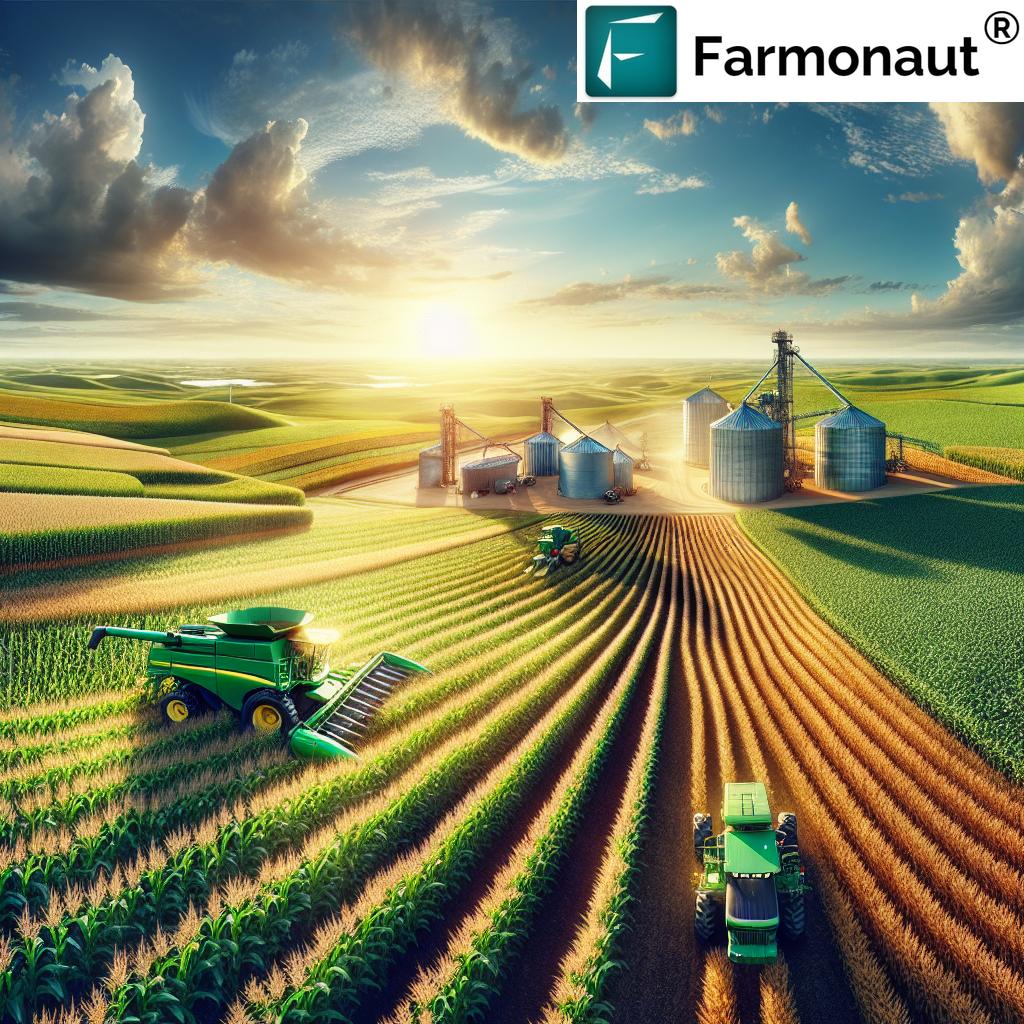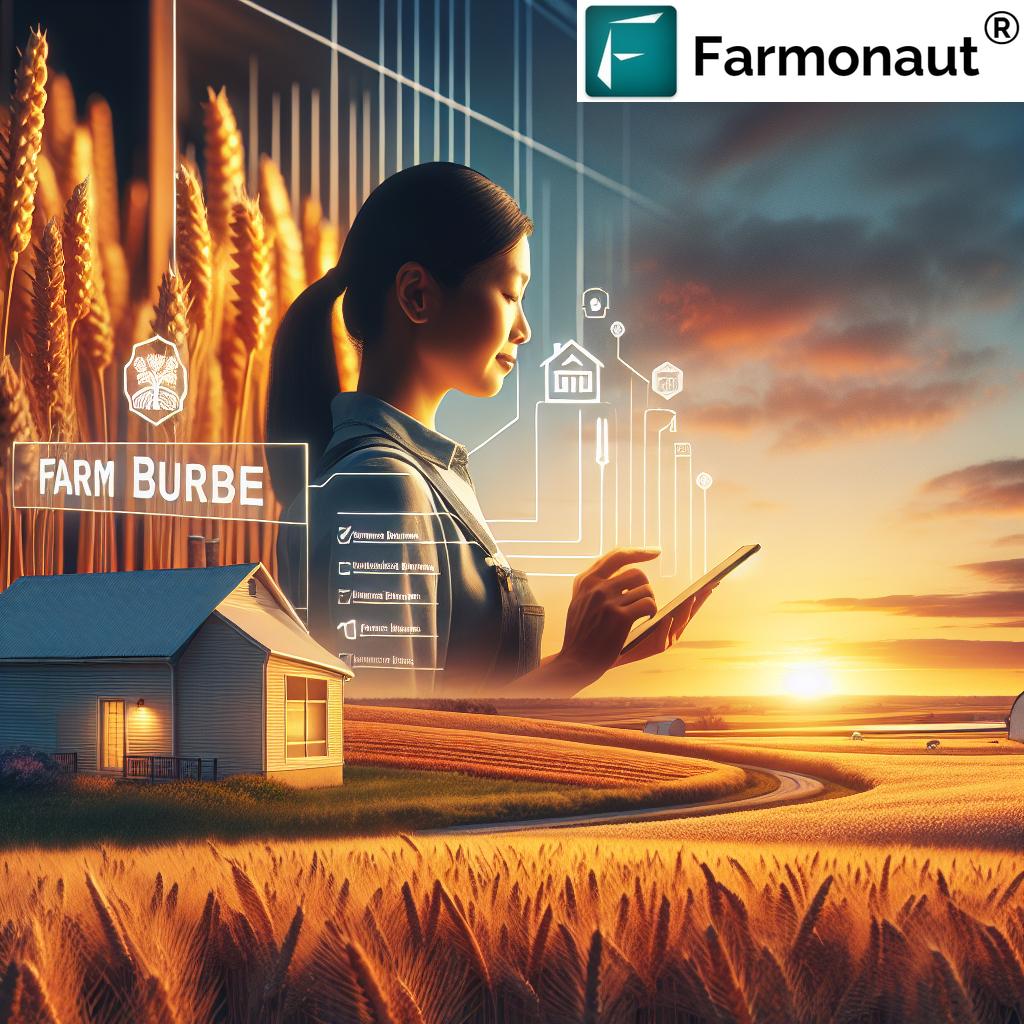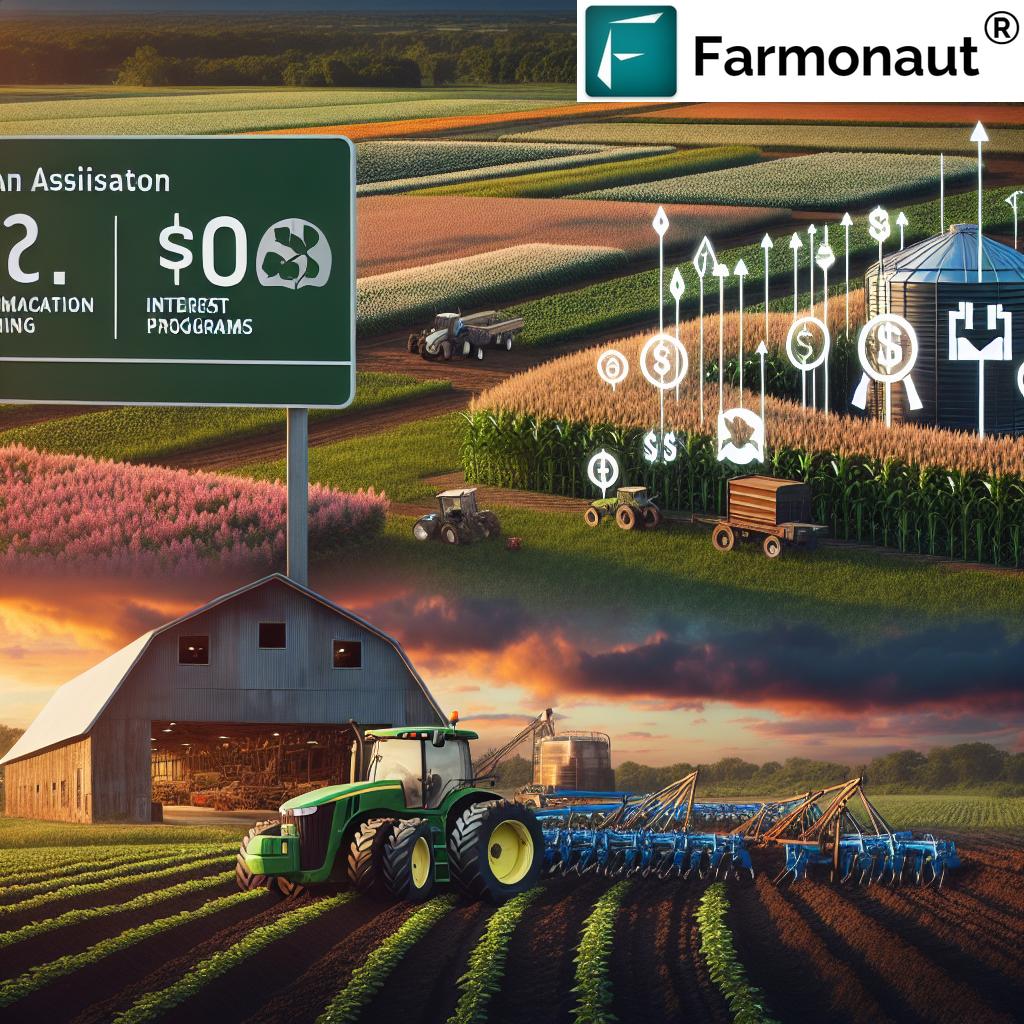Essential Agriculture Technique for Dry West Texas Farming: Sustainable Methods for 2025 and Beyond
“Over 70% of West Texas farms rely on dryland techniques to conserve water and boost climate resilience.”
Table of Contents
- Introduction: The Essential of Agriculture in Dry West Texas
- Climate Challenges: Why Dryland Techniques Became Essential
- Understanding Dryland Farming: Definition and Context
- Conservation Tillage: The Cornerstone Technique Agriculture for Sustainability
- Drought-Resilient Crop Varieties: Adapting to Limited Rainfall
- Other Essential Dryland Techniques & Soil Conservation Practices
- Innovating with Precision Agriculture and Satellite Insights (2025+)
- Environmental Benefits & Soil Health: Ensuring Long-term Resilience
- Key Sustainable West Texas Agriculture Techniques: Comparative Feature Table
- Optimizing Dryland Farming with Advanced Tools & Farmonaut Solutions
- The Future: Dryland Farming Outlook and Innovations for 2025 & Beyond
- FAQs: Essential Agriculture Techniques for Dry West Texas
- Conclusion: Which Farming Technique Became Essential for Agriculture in the Dry Conditions of West Texas?
- Farmonaut Subscription Options
Introduction: The Essential of Agriculture in Dry West Texas
Which farming technique became essential for agriculture in the dry conditions of West Texas? As we step into 2025 and beyond, this question is critical for farmers, agricultural experts, and anyone concerned with sustainability in arid regions. In West Texas—a region marked by limited rainfall, erratic weather patterns, and increasing climate uncertainty—traditional irrigated farming can no longer suffice. Instead, dryland farming techniques, focused on soil moisture retention, conservation tillage, and the use of drought-resilient crop varieties, have become indispensable. These agriculture techniques not only ensure continued productivity but also foster environmental sustainability, helping farmers adapt and thrive in extreme conditions.
This comprehensive guide explores the critical dryland practices, the science behind them, and actionable insights for farmers seeking to optimize water use and soil health in West Texas. From the fundamentals of dryland farming to precision agriculture, innovative crop selection, and sustainability, discover how to secure your farm’s future in an era of climate variability.
Climate Challenges: Why Dryland Techniques Became Essential
The agriculture technique used in West Texas is shaped by its arid and semi-arid climate. Annual rainfall often falls below 20 inches, and prolonged droughts with high evapotranspiration rates are increasingly common. Water scarcity, unpredictable weather patterns, and soil degradation have presented critical challenges that make the essential of agriculture in this region fundamentally different from other parts of the country.
- Limited Rainfall: Precipitation is erratic and often fails to meet crop needs.
- High Temperatures: Intense heat raises the risk of rapid soil moisture evaporation.
- Wind and Erosion: Strong winds cause significant topsoil loss, exacerbating soil erosion.
- Water Scarcity: Reliance on groundwater (e.g., Ogallala Aquifer) is unsustainable due to depletion rates.
- Poor Soil Quality: Many areas have sandy or clay soils with low organic content, making crop management even more difficult.
These factors combined have made it necessary to identify and refine technique agriculture that prioritize soil conservation, efficient water use, and climate resilience.
“Drought-resilient crops can increase West Texas farm yields by up to 40% during prolonged dry spells.”
Understanding Dryland Farming: Definition and Context for West Texas
Dryland farming is a set of methods specifically designed for areas with less than 20 inches of rainfall annually, a category into which most of West Texas falls. Unlike irrigated farming—which relies on external water sources—dryland farming relies entirely on natural precipitation, making efficient moisture retention and soil health the essential of agriculture in drought-prone regions.
Key Components of Dryland Methods
- Soil Moisture Conservation: Using techniques that retain water in the soil to the greatest extent possible.
- Minimal Disturbance: Tillage practices are reduced or eliminated to preserve soil structure and organic matter.
- Drought-Tolerant Crops: Selection of varieties that can perform under limited water availability.
- Soil Cover: Maintaining crop residues or cover crops on the soil surface to reduce erosion and evaporation.
- Resilient Management: Adapting planting schedules and crop rotations to match changing precipitation patterns.
Dryland farming is not just a single method, but a holistic approach that draws on science, tradition, and continuous innovation—especially as we head toward 2025 and beyond.
Conservation Tillage: The Cornerstone Technique Agriculture for Sustainability
Of all the farming essentials adopted in West Texas, conservation tillage—especially no-till and minimum tillage—has emerged as the cornerstone agriculture technique due to its profound impact on soil health, water retention, and climate resilience.
What Is Conservation Tillage?
Conservation tillage includes any method that leaves crop residues (such as stems and leaves) on the soil surface after planting. Unlike traditional plowing (which turns over the soil, exposing it to rapid evaporation and erosion), this practice protects the soil by:
- Acting as Mulch: Residues insulate the soil, lowering surface temperature and reducing moisture loss.
- Reducing Wind and Water Erosion: Ground cover prevents topsoil from being blown or washed away.
- Improving Organic Matter: Crop residues decompose, adding nutrients and improving structure.
- Limiting Water Evaporation: Less exposed soil means more water stays available for crops during dry spells.
- Enhancing Soil Biology: Healthy microbial life and earthworm populations thrive under residues, further improving soil health.
Minimum Tillage vs. No-Till: What’s Best?
- Minimum Tillage: Some soil disturbance occurs, but the majority of residues are maintained.
- No-Till: No disturbance; seeds are directly drilled into last year’s crop residues.
Field trials across West Texas have shown that no-till systems can reduce water consumption by up to 30% and improve soil organic matter by 15-20% over a decade. This is a critical strategy for sustainable farming in an environment where every drop counts.
Drought-Resilient Crop Varieties: Adapting to Limited Rainfall
Drought-resilient crops represent another essential component of dryland farming in West Texas. Given the region’s limited and erratic rainfall, crop selection strategies that emphasize resilience and efficient water use are paramount for sustainable agricultural productivity.
Top Crops for Dryland West Texas
- Sorghum: The most popular staple due to its deep root system, physiological adaptations, and ability to thrive in drought-prone soils.
- Millet: Grows well on poor soils, requires less water, and tolerates intense heat and high evapotranspiration rates.
- Wheat (drought-tolerant strains): Certain winter and spring wheat varieties have been specifically developed to maximize yield under moisture stress.
- Other options: Barley, rye, and some pulses (e.g., chickpeas) have also been used effectively.
Advances in science and crop development have led to new strains that require less water, mature faster, and have greater resilience against stress. These varieties reduce the risk of total crop failure—a critical factor as climate variability intensifies around 2025.
Key Crop Characteristics
- Deep Root Systems: Access water stored deeper in the soil profile.
- Efficient Water Use: Higher transpiration efficiency, meaning more biomass per drop of water.
- Physiological Adaptations: Some close leaf pores during hottest parts of the day, reducing water loss.
- Rapid Growth: Shorter life cycles to take advantage of limited moisture windows.
Other Essential Dryland Techniques & Soil Conservation Practices
The essentials of agriculture in dry West Texas go beyond crop selection and tillage. A holistic set of practices has been designed and adopted to ensure moisture retention, prevent erosion, and boost soil health. Below are additional farming essentials for the region:
- Contour Farming: Planting across slopes (rather than up/down) to slow runoff, reduce water loss, and limit soil erosion.
- Terracing: Constructing low, step-like embankments reduces soil loss from wind and water, keeping more nutrients where crops need them.
- Cover Cropping: Growing plants (like legumes or grasses) in the off-season to provide continuous soil cover, fix nitrogen, and reduce evaporation.
- Crop Rotation: Alternating different crops each season to improve pest management, harness different nutrients, and maintain healthy soil microbe populations.
- Mulching: Adding organic matter or synthetic mulches to the soil surface further enhances water retention and regulates temperature.
- Windbreaks or Shelterbelts: Planting rows of trees or shrubs to protect crops against wind erosion—essential in the wide-open plains of West Texas.
- Appropriate Planting Dates: Sowing seeds just before or during the most reliable rainfall windows (often fall in West Texas) to maximize establishment and growth.
Together, these soil conservation methods help retain limited soil moisture, reduce erosion, prevent fertility loss, and ensure agricultural productivity under the most challenging dryland conditions.
Innovating with Precision Agriculture and Satellite Insights (2025+)
Modern dryland farming in West Texas is being revolutionized by precision agriculture: the strategic use of advanced technology to optimize every aspect of farm management for maximum efficiency and resilience.
How Precision Agriculture & Farmonaut Satellite Technology Help
- Soil Moisture Monitoring: Satellite data and in-field sensors provide actionable data on soil water availability, helping schedule field operations and irrigation (where used) for maximum efficiency.
- Optimized Crop Selection: Data-driven records of historical field performance help identify which crop varieties and rotations work best under current climate and soil conditions.
- Weather Forecasting: Hyperlocal predictions allow timely planting, harvesting, and residue management—especially important with unpredictable rainfall.
- Precision Inputs: Variable-rate seeding, fertilization, and weed/pest management improve yield, reduce input waste, and minimize environmental impact.
As a satellite technology company, we at Farmonaut offer carbon footprinting solutions for farmers—all accessible via our web, iOS, and Android apps. With real-time crop monitoring, soil condition tracking, and blockchain-powered traceability for supply chain transparency, we help West Texas farmers apply the best technique agriculture for sustainability and profitability.
Explore our Fleet Management solutions for optimizing agricultural logistics and equipment usage—essential for West Texas’s large-scale farmland and remote locations.
For businesses or researchers needing integrated data into their own systems, Farmonaut’s Satellite Data API and developer documentation make it seamless to manage and analyze environmental information at scale.
In a region where water remains the limiting factor for productivity, these precision agriculture tools help ensure that every drop, every input, and every acre counts toward sustainability.
Environmental Benefits & Soil Health: Ensuring Long-term Resilience
West Texas dryland farming practices do more than just boost yields—they are vital for maintaining soil health and protecting the environment. With desertification threatening arid regions worldwide, these agriculture techniques help ensure long-term land viability.
Key Environmental Gains
- Soil Carbon Sequestration:
Conservation tillage and organic matter retention increase soil carbon levels, helping offset greenhouse gas emissions. - Erosion Control:
Residues, cover crops, and windbreaks reduce soil loss to wind and water, preserving fertility. - Reduced Water Use:
Efficient farming methods lower total water withdrawal from aquifers, helping protect scarce regional water resources. - Pest and Disease Management:
Diverse crop rotations and healthy soils lower reliance on chemical inputs, safeguarding surrounding ecosystems. - Reduced Runoff:
Soil with higher water-holding capacity captures rainfall, replenishing groundwater and minimizing flash flooding.
For those tracking their sustainability journey, we recommend learning more about Farmonaut’s Carbon Footprinting tools for transparent, actionable reporting on your farm’s environmental impact.
Key Sustainable West Texas Agriculture Techniques: Comparative Feature Table
To help you select the most impactful technique agriculture for your operation, below is a comparative feature table. This table rates major sustainable farming techniques for dryland West Texas by estimated water savings, yield impact, soil health improvement, and climate suitability for 2025 and beyond.
| Technique | Estimated Water Savings (%) | Estimated Yield Increase (%) | Soil Health Improvement | Climate Suitability |
|---|---|---|---|---|
| Dryland Farming (Core Methods) | 30% | 15-25% | Significant | Excellent for West Texas |
| Conservation Tillage (No-Till/Minimum Tillage) | 25-35% | 10-20% | High & Builds Over Time | Optimal for Arid & Semi-Arid |
| Drought-Resilient Crop Varieties | 10-20% | Up to 40% in dry years | Depends on rotation | Excellent for West Texas |
| Cover Cropping | 5-15% | 5-10% | Very High | High (if managed well) |
| Contour Farming & Terracing | Up to 10% | 3-7% | Moderate to High | Best on slopes, not all fields |
| Mulching & Windbreaks | 5-10% | Small to Moderate | Very High for Erosion Reduction | Widespread Use |
| Precision Agriculture / Satellite Monitoring | Indirect, up to 15% | 5-15% | Enables data-driven improvements | Critical for Adaptation |
Optimizing Dryland Farming with Advanced Tools & Farmonaut Solutions
With the ongoing technology revolution in agriculture, tools that make real-time, data-driven management possible are now essential for thriving in West Texas’s challenging dryland environment.
- Satellite Crop Health Monitoring: Our multispectral satellite imagery empowers farmers to track NDVI, soil moisture, and crop stress quickly and accurately for better decision-making.
- AI Advisory Systems (Jeevn AI): Receive instant, field-specific advice, weather forecasts, and productivity strategies based on latest remote sensing data.
- Blockchain Product Traceability: Demonstrate responsible, sustainable, and authentic farm practices with our traceability solutions. Learn about product traceability.
- Environmental Tracking: Prove and improve your farm’s sustainability metrics, such as carbon footprint—essential for compliance and for attracting eco-conscious buyers.
- Resource and Fleet Management: Organized machinery, optimized routes, and easy equipment scheduling with Fleet Management tools—boosting efficiency even across large, remote fields.
- Crop Loan & Insurance Support: Simplify your access to financial products with satellite data verification, available via our Crop Loan and Insurance platform.
Farmonaut’s solutions are web-based and mobile-friendly, ensuring you can manage your farm anytime, anywhere—even under the toughest Texas conditions. Discover the full suite by accessing the app below.
Explore our large-scale farm management platform designed for dryland and arid regions.
Access the Farmonaut API and API Developer Docs for seamless technology integration and scalable monitoring.
The Future: Dryland Farming Outlook and Innovations for 2025 & Beyond
With ever-intensifying climate variability and increasing pressure on water resources, the essentials of agriculture in West Texas will continue to evolve rapidly in the coming years. Based on 2025 trends, the following shifts are expected to become even more prominent:
- Greater Integration of Biotechnology:
- Gene-edited and next-generation drought-resistant crop varieties will further extend the boundaries of what’s possible under extreme moisture stress.
- Crop rotations will be optimized through rapid phenotyping and digital experimentation.
- Intelligent Weather and Resource Management Systems:
- Advanced AI systems (such as Farmonaut’s Jeevn AI) will automatically adapt farm decisions to real-time climatic data and unpredictable rainfall events.
- Community-Based Water and Soil Management:
- Regional strategies for aquifer replenishment, improved runoff management, and joint planning will become essential among neighbors and local authorities.
- Expansion of Sustainability Reporting and Incentives:
- Transparent proof of soil health, carbon sequestration, and sustainability metrics (with solutions similar to Farmonaut Carbon Footprinting) will enhance access to premium markets and government incentives.
- Comprehensive Digital Farm Management:
- Wider adoption of integrated farm management platforms will enable complete control of data, operations, and supply chain traceability, critical for compliance and profitability.
To stay ahead, West Texas farmers should embrace a continuous learning mindset, integrating both time-tested and cutting-edge tools that bolster resilience, conserve resources, and sustain yields through whatever challenges lie ahead.
Looking to optimize crop choices and planting schedules by leveraging satellite and AI insights? Check out Farmonaut’s Crop Plantation & Forest Advisory platform.
FAQs: Essential Agriculture Techniques for Dry West Texas
-
Q: Which farming technique became essential for agriculture in the dry conditions of West Texas?
A: Conservation tillage (especially no-till), paired with drought-resilient crop varieties and soil moisture management, has become essential for sustainable productivity, environmental protection, and climate resilience in West Texas. -
Q: What are the main soil conservation practices used in West Texas?
A: Common practices include minimum/no-till, cover cropping, contour farming, terracing, mulching, crop rotation, and establishing windbreaks—all aimed at preserving soil structure, minimizing erosion, and holding moisture. -
Q: How do drought-resistant crops benefit West Texas farmers?
A: They can boost yields by up to 40% during prolonged dry spells, reduce risk of crop failure, and ensure more stable farm income even with limited or erratic rainfall patterns. -
Q: How will climate trends affect dryland farming after 2025?
A: Increased climate variability will make efficient water and soil management, resilient crop varieties, and technology adoption even more critical for maintaining agricultural productivity in West Texas. -
Q: What role does precision agriculture play in dryland regions?
A: Precision agriculture streamlines water use, field operations, and resource management by providing actionable data on soil and crop status, greatly improving efficiency and sustainability. -
Q: Where can I access satellite-driven insights and advisory systems for my farm?
A: Platforms like Farmonaut offer real-time satellite monitoring, AI-powered farm advisory, traceability, and resource management to support modern dryland agriculture across West Texas.
Conclusion: Which Farming Technique Became Essential for Agriculture in the Dry Conditions of West Texas?
Dryland farming is not just a method but the agriculture technique upon which the future of West Texas farming now rests. In an age of limited water, unpredictable climate patterns, and resource scarcity, the combination of conservation tillage, drought-resistant crop selection, and advanced soil conservation practices has proven essential.
Thanks to advances in science and the integration of precision agriculture tools—including satellite insights, AI-driven advisory, and environmental impact tracking—West Texas farmers can now better adapt, conserve, and thrive. This holistic strategy maximizes yields, ensures environmental sustainability, and fortifies farms against the challenges posed by 2025 and beyond.
For those seeking to implement or optimize these farming essentials, resources like Farmonaut’s web and mobile platforms, satellite data API, and sustainability tools offer direct, actionable solutions for the dry realities of West Texas agriculture.
In summary: The essential agriculture technique for dry West Texas combines conservation tillage, climate-adaptive crop varieties, and sustainable management—making these practices the true cornerstone of resilient, productive farming in the region.















